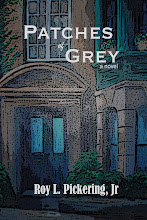
Someone once said for the first time ever that a picture speaks a thousand words. In the case of the image down below, a picture and one sentence speak volumes. Many New Yorkers were startled to spot this bold billboard in New York City yesterday, the number and region increasing as the media spotlighted it and inevitably it became a hot topic on Twitter, emphasis on HOT. Abortion is not an issue that people have carefree opinions about. Those on one side of the debate feel as passionately as those on the opposite, and even people who attempt to straddle the fence are unable to do so in a casual manner. Rhetoric on abortion rights is often tossed about in the game of political football, but abortion does not neatly fall into a category where Democrats unite in one perspective and Republicans all join hands in opposition. If you're not Pro Life you must be Pro Death, if you're not Pro Choice you must be Anti Choice. Of course the reality of perspectives is not nearly so elementary. Everyone agrees (I think) that in an ideal world no woman would ever feel compelled to have an abortion. And the right to make your own choice free of duress is the American way. So when the choice an American woman makes is at the expense of the unborn, sparks fly as ideologies clash.
The creators of the feather ruffling billboard cranked up the temperature on a matter already boiling over by making it race specific. By targeting African Americans rather than women in general (or people in general since baby making tends to be a joint activity) cries of racism were inescapable. The commentary made was a punch to the gut of every person who identifies themselves as being Black. I certainly felt the sucker punch. But after the initial reaction there was divergence of opinion. Some felt that with the bombardment of messages we receive today, resorting to shock value in such an instance is a necessary evil. Better to disturb people into contemplation than being subtle at the risk of being ignored. Others started off furious and remained that way, feeling that their Blackness, their Womanhood, and their Black Womanhood had all been assaulted.
I have zero intention of preaching my personal views about abortion here. Nor will I delve into the subject of racial sensitivity at the moment. You can browse previous postings for my take on identity and sometimes misplaced pride. Reactions and opinions from all parties about the billboard shown below are valid. I'll just stick with the facts as I understand them to be, and common sense as I am best able to render it. Taking a side is often more tempting than trying to see both of them, but for now I'll resist temptation.
The billboard informs us in jarring fashion that abortion is the number one cause of death in the African American community. We are not told where it ranks with any other ethnic groups or throughout the world at large, which implies (honestly or not I do not know) that African Americans abort fetuses at a higher rate than anyone else. If factual, awareness of the truth is never a bad thing. Awareness precedes action and I don't believe anyone can convincingly argue against trying to lower the ranking. Debates therefore should take place about WHO is best suited to deliver this message, WHERE it is best done, WHEN are the most suitable occassions, WHY the bearer of such news is delivering it (political gain being the least acceptable reason), and most importantly, HOW we should move to prevent a sad statistic from becoming an epidemic. Teen abstinence certainly needs to take a seat at the bargaining table along with information and availability of contraceptives. But we know that in spite of education attempts such measures will not be taken in a great many situations (such as when your mother is the governor of Alaska as one example), so conversation must be had about how next to proceed.
I have written about my advocacy for increased awareness in a positive light about the option of Adoption. The quandary of abortion is a theme addressed in my first novel Patches of Grey and a central issue of my second - Matters of Convenience. I personally did not need to see a billboard to be stirred into thought on this subject. But perhaps some people did. Yesterday on Twitter I wrote "You can rarely convince anyone of anything if you start off by insulting them". At most you can prod them, probably into outrage at your audacity rather than into problem resolution mode. So I cannot say of the billboard as if running for office that I approve of this message, because in fact I do not approve of the offensive way in which it was presented. What I do wholeheartedly approve of is people declaring that enough is enough, taking accountability, and then doing something worthwhile about it.

Article on what went up and down
The creators of the feather ruffling billboard cranked up the temperature on a matter already boiling over by making it race specific. By targeting African Americans rather than women in general (or people in general since baby making tends to be a joint activity) cries of racism were inescapable. The commentary made was a punch to the gut of every person who identifies themselves as being Black. I certainly felt the sucker punch. But after the initial reaction there was divergence of opinion. Some felt that with the bombardment of messages we receive today, resorting to shock value in such an instance is a necessary evil. Better to disturb people into contemplation than being subtle at the risk of being ignored. Others started off furious and remained that way, feeling that their Blackness, their Womanhood, and their Black Womanhood had all been assaulted.
I have zero intention of preaching my personal views about abortion here. Nor will I delve into the subject of racial sensitivity at the moment. You can browse previous postings for my take on identity and sometimes misplaced pride. Reactions and opinions from all parties about the billboard shown below are valid. I'll just stick with the facts as I understand them to be, and common sense as I am best able to render it. Taking a side is often more tempting than trying to see both of them, but for now I'll resist temptation.
The billboard informs us in jarring fashion that abortion is the number one cause of death in the African American community. We are not told where it ranks with any other ethnic groups or throughout the world at large, which implies (honestly or not I do not know) that African Americans abort fetuses at a higher rate than anyone else. If factual, awareness of the truth is never a bad thing. Awareness precedes action and I don't believe anyone can convincingly argue against trying to lower the ranking. Debates therefore should take place about WHO is best suited to deliver this message, WHERE it is best done, WHEN are the most suitable occassions, WHY the bearer of such news is delivering it (political gain being the least acceptable reason), and most importantly, HOW we should move to prevent a sad statistic from becoming an epidemic. Teen abstinence certainly needs to take a seat at the bargaining table along with information and availability of contraceptives. But we know that in spite of education attempts such measures will not be taken in a great many situations (such as when your mother is the governor of Alaska as one example), so conversation must be had about how next to proceed.
I have written about my advocacy for increased awareness in a positive light about the option of Adoption. The quandary of abortion is a theme addressed in my first novel Patches of Grey and a central issue of my second - Matters of Convenience. I personally did not need to see a billboard to be stirred into thought on this subject. But perhaps some people did. Yesterday on Twitter I wrote "You can rarely convince anyone of anything if you start off by insulting them". At most you can prod them, probably into outrage at your audacity rather than into problem resolution mode. So I cannot say of the billboard as if running for office that I approve of this message, because in fact I do not approve of the offensive way in which it was presented. What I do wholeheartedly approve of is people declaring that enough is enough, taking accountability, and then doing something worthwhile about it.

Article on what went up and down


















